Top image: At the 1st Marine Division cemetery, a Marine kneels at the grave of a friend lost on Okinawa. US Marine Corps photograph. The National WWII Museum, Gift of Dylan Utley, Accession #2012.019.782
On June 22, 1945, the American flag rose into the quiet blue sky above Tenth Army’s headquarters as a band played the “Star Spangled Banner,” a somber observation of US victory on Okinawa.
The road to that point had been long and bloody, a plodding march from the landing beaches on April 1 to the southern tip of the mainland. For three months, US military forces engaged in merciless fighting for control of 640 square miles of the Ryukyu Islands, only 340 miles from mainland Japan. Operation Iceberg on Okinawa, the last major battle of the war, was a combined operation of unprecedented scale, a savage climax for a combat theater marked by years of unrelenting savagery.
The majority of the Tenth Army was comprised of some of the most battle-tested American troops in the Pacific. The III Amphibious Corps’ 1st and 2nd Marine Divisions were hardened by fighting on Guadalcanal, Cape Gloucester, Peleliu, Tarawa, Saipan, and Tinian. Even the 6th Marine Division, formed relatively late in the war, had a core of veterans around which to build.
Alongside the Marine, the U.S. Army’s XXIV Corps was comprised of the 7th, 27th, 77th, and 96th Infantry Divisions. Between them, fighting in the Aleutians and on Kwajalein, Eniwetok, Guam, and Leyte had hammered them into tough outfits before they arrived in the Ryukyu Islands for the toughest campaign of all.
Before the American invasion, the Japanese constructed an intricate system of formidable positions across southern Okinawa. Successive east-west defensive belts stretched across the island. Built into and on top of ridges, hills, and escarpments, these lines transformed the terrain itself into a fortress. No flanking routes were available. After landing on the west side of the island, the Tenth Army pushed directly south into the teeth of the enemy’s prepared defenses toward the Japanese headquarters at Shuri, and even beyond once overwhelming pressure forced the enemy to reposition further south. The result was some of the most ferocious fighting of the Pacific Theater.
Despite their numerical inferiority, the Japanese were excellent defensive fighters. Each yard gained by the Americans was paid for in blood against the dug-in enemy. While the terrain and Japanese created challenging obstacles to victory, the heat and unceasing torrential rain for much of the month of May further hampered US operations. The Tenth Army advanced only four miles in the first 7 weeks of the battle. With the rain finally slackening and facing a much-weakened force toward the end of May, however, the final 10 miles to the southern tip of the island required only four weeks of effort.
Fighting offshore was similarly vicious. In terrifying suicidal attacks, Japanese aircraft continually harassed the fleet arrayed to support the Pacific Theater’s largest amphibious assault. During the campaign 34 ships were lost, of which 26 had been the victims of suicide attacks.
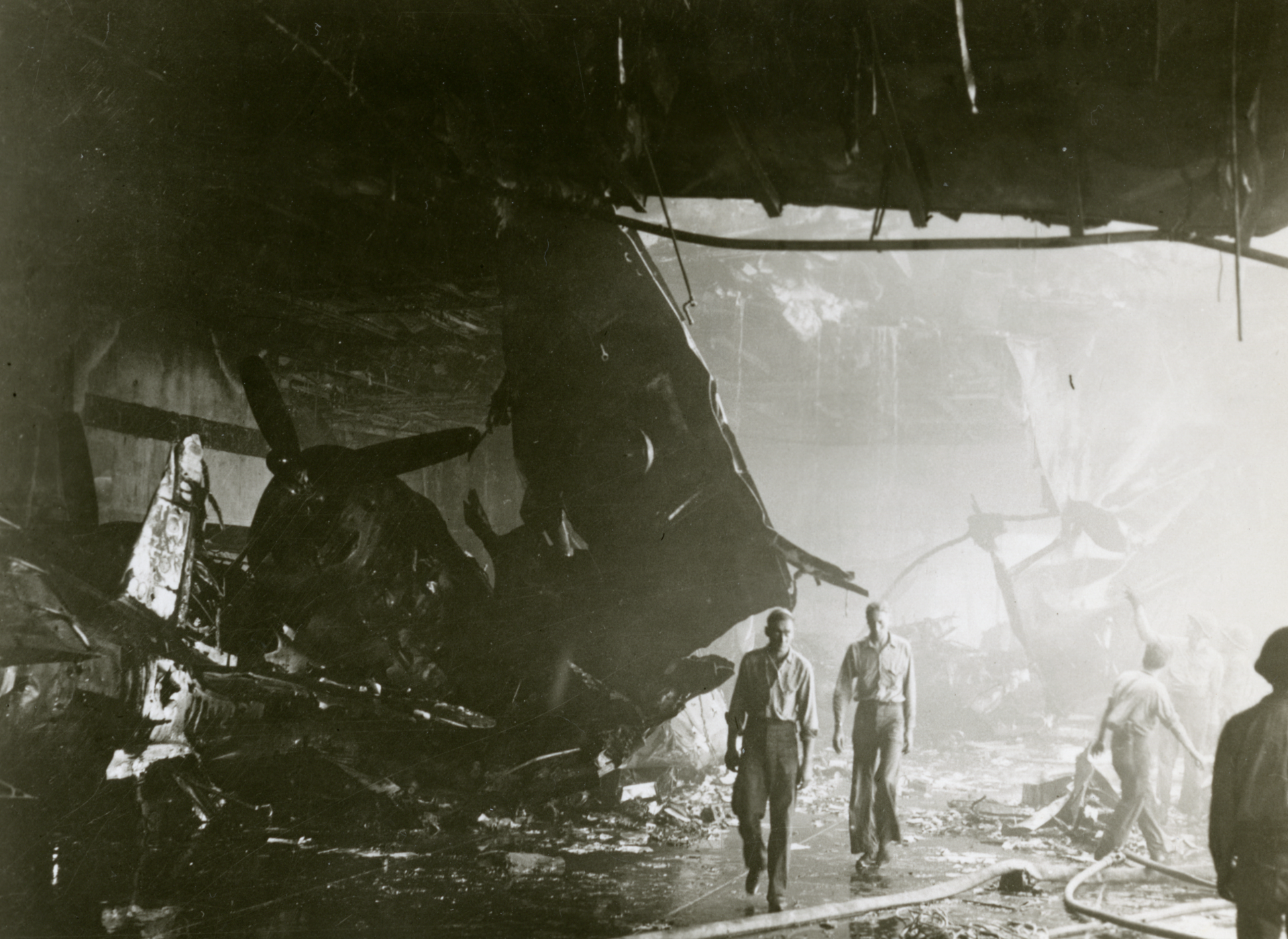
Sailors walk through the wrecked hangar deck of USS Bunker Hill (CV-17) following a kamikaze attack during the Battle of Okinawa. US Navy official photograph. The National WWII Museum, Gift of Thomas J. Hanlon, Accession #2013.495.412
Victory came at a high cost. The battle’s brutal character can be seen in the amount of ammunition expended. A back-and-forth artillery duel between the Americans and the Japanese rocked Okinawa day and night. The Tenth Army fired 1.1 million 105-mm howitzer rounds during the battle, in the process creating some of the largest artillery barrages of the war. “I am really surprised at the amount of ammunition that the enemy has,” a Japanese soldier confided to his diary in late April. “When friendly forces fire one round, at least ten rounds are guaranteed to come back.” Operation Iceberg used up twice the amount of materiel needed in the Marianas and three times that of the battle on Iwo Jima.
Combat was violent and usually at close quarters. The Americans and Japanese engaged each other on numerous hillsides and came face-to-face in caves, trenches, bunkers, and pillboxes. In the frenetic fighting, XXIV Corps troops dropped some 521,000 projectiles down 60-mm mortar tubes, expended nine million rifle bullets, burned through 16 million .30 caliber machine gun rounds, tossed 367,000 hand grenades, and fired 25,600 rifle grenades. The U.S. Navy’s awesome guns added to the stunning violence of American firepower, as some 600,000 rounds slammed into the Okinawan terrain in support of the ground operations.
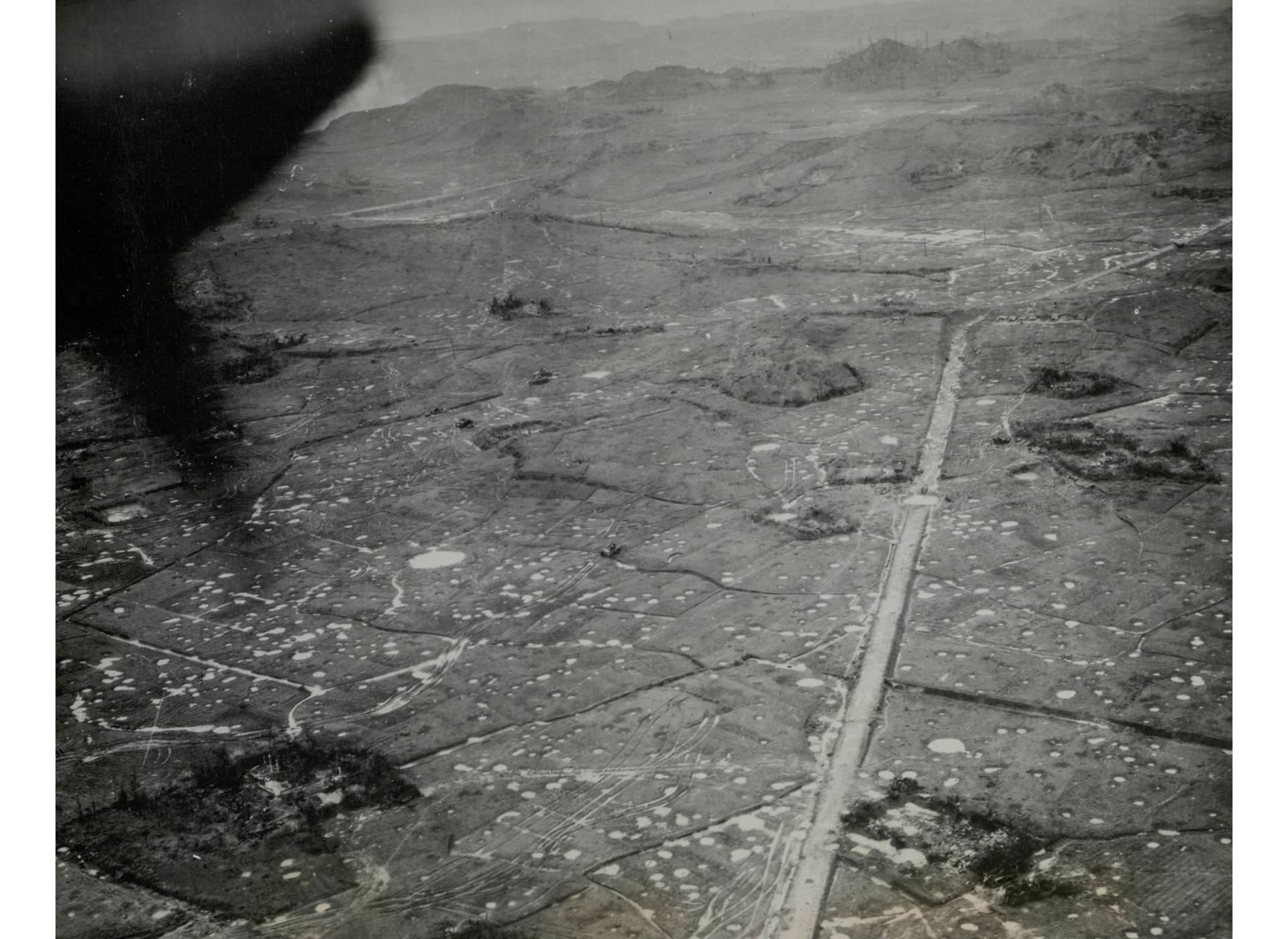
Fighting on Okinawa left much of the southern half of the island a disfigured and cratered wasteland. US Army official photograph. The National WWII Museum, Gift of Dylan Utley, Accession #2012.019.400
Casualties are another indicator of the fierce fight that occurred on Okinawa. Operation Iceberg cost the Americans more than any other campaign in the Pacific War, a reflection of a well prepared, capable, and fanatical enemy defending difficult terrain.
When the guns fell silent, more than 240,000 people had lost their lives in the campaign for Okinawa. The American loss rate was 35 percent of the force, totaling 49,151 casualties. Of those, 12,520 were killed or missing and 36,631 were wounded in action. The XXIV Corps suffered 4,412 killed in action and 17,689 wounded. Non-battle casualties for the Army totaled 15,613, including those who reached their breaking point from combat fatigue. The Marines of the III Amphibious Corps counted 16,507 battle casualties, with 2,779 of those killed and 13,609 wounded. Like the Army, their 10,598 non-battle casualties in part reflected the psychological stress of combat.
E.B. Sledge, who served in the 1st Marine Division on Okinawa, observed that the “few men like me who never got hit can claim with justification that we survived the abyss of war as fugitives from the law of averages.” That was certainly true of survivors from the 29th Marine Regiment, which suffered a sobering 80 percent of its men killed and wounded, the highest regimental loss for the American military since the Civil War.
The Tenth Army’s heaviest losses occurred between April 19-22, when the XXIV Corps suffered 2,851 casualties in the terrible fight to punch through the outer defenses of the Shuri Line. The heroism of US Navy personnel who endured persistent and merciless kamikaze attacks offshore is reflected in 4,907 sailors killed and 4,824 wounded, with 368 ships damaged in addition to the 36 ships sunk. The fight in the air was equally dangerous, as the Americans lost 763 planes in the three-month operation, including in bombing raids against the airfields launching kamikaze attacks.
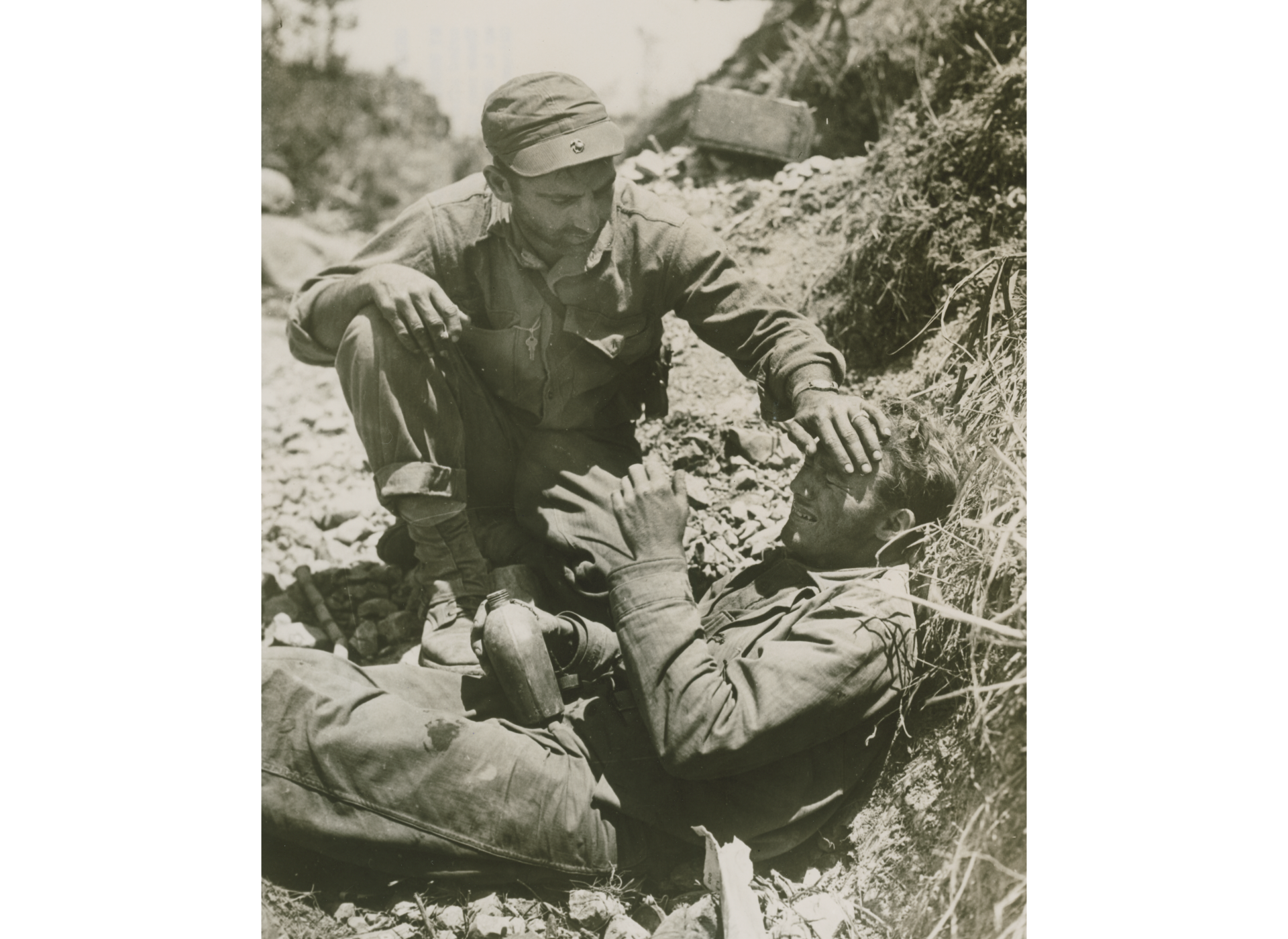
A 1st Division Marine comforts a fellow Marine who had just witnessed the death of his friend. US Navy official photograph. The National WWII Museum, Gift of Charles Ives, Accession #2011.102.602
While many in the European Theater could revel in their role as liberators, the survivors of Operation Iceberg tended to view victory on Okinawa more somberly. For Wayne MacGregor, Jr., a veteran of the 77th Infantry Division, it was “the end of the nightmare.” Sledge termed it the “end of the agony.” Okinawa left him with “the most tortuous and persistent of all the ghastly war nightmares that have haunted me for many, many years. The dream is always the same, going back up to the lines during the bloody, muddy month of May on Okinawa.” For Herman Buffington of the 96th Infantry Division, Okinawa would remain “etched deep” in his mind. When President Harry Truman met with the US military leadership in early June to discuss an invasion of the Japanese home islands, Iceberg’s terrible price led him to want to avoid another “Okinawa from one end of Japan to the other.”
So close to the home islands, most Japanese soldiers refused to surrender and fought to the death. Their fanaticism contributed to a dreadful toll. Some 110,000 Japanese and conscripted Okinawan defenders were killed in action. The battle created a humanitarian disaster for civilians as well. Exact numbers are impossible to know, but some estimates claim that over 100,000 civilians or as much as one-third of the pre-war population died during the battle. Caught in the crossfire of a “typhoon of steel,” waves of refugees became intermingled with the Japanese army as it stumbled toward a final stand on the southern coast. Others died by their own hands after Japanese propaganda convinced them suicide was preferable to the horrors of supposed American depravity. Some 80,000 women, children, and older men emerged from caves at the southern tip of Okinawa where they had sought shelter during the final weeks of the battle. Between one-third and one-half were wounded, but all suffered the dehumanizing effects of modern warfare, their lives shattered and their bucolic island disfigured into a scarred moonscape.
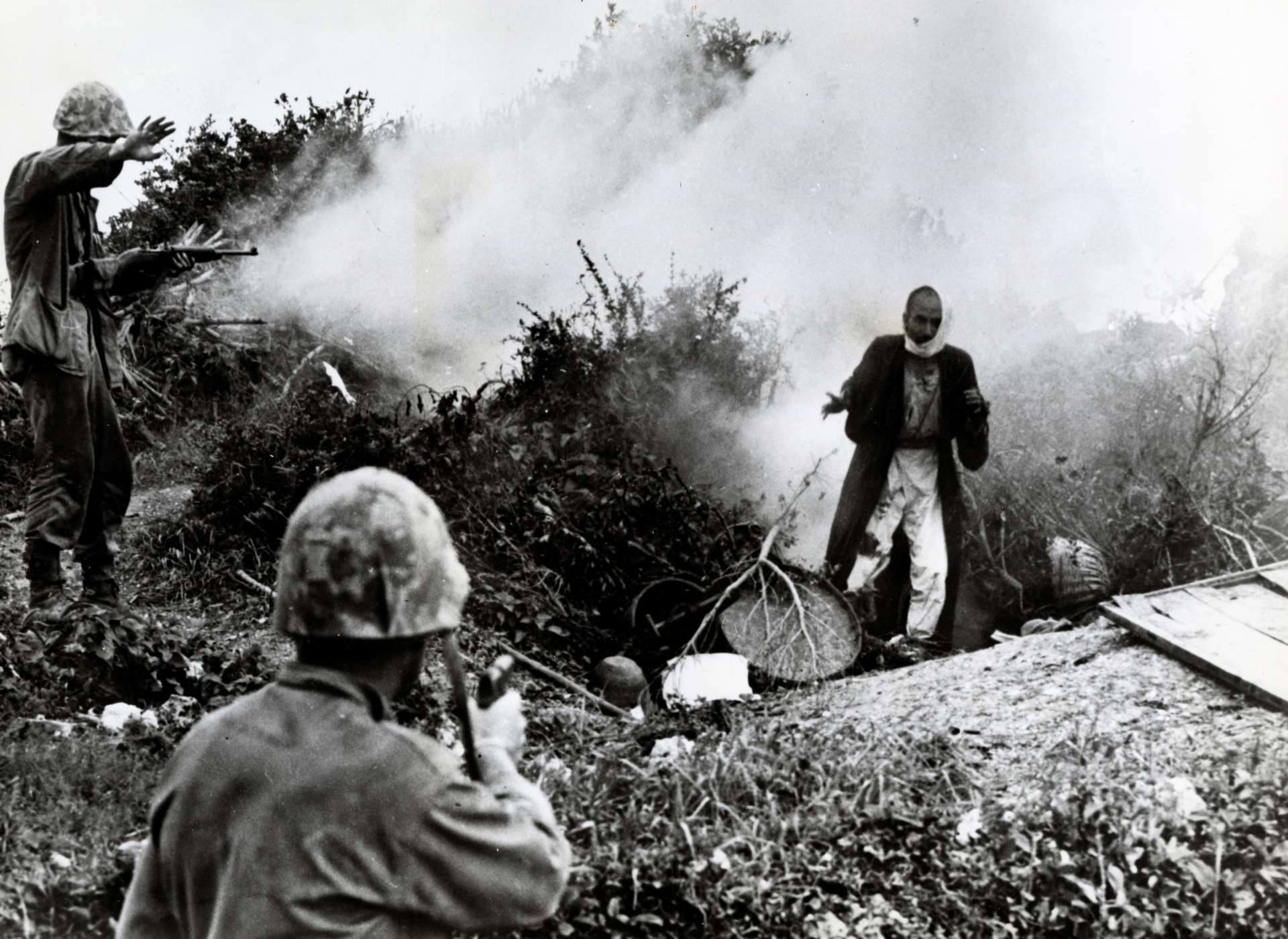
Okinawan refugees and retreating Japanese soldiers both sought shelter in Okinawa’s many caves, creating difficult situations for American troops tasked with clearing them. US Marine Corps official photograph. The National WWII Museum, Gift of Dylan Utley, Accession #2012.019.491
The losses on Okinawa were not confined to the anonymous enlisted men and officers. The Pulitzer Prize-winning journalist Ernie Pyle had become something of an honorary grunt to those whom he covered. From the foxhole perspective, he explained the awful realities of war with unflinching clarity. “I love the infantry because they are the underdogs,” he wrote in 1943. “And in the end they are the guys that wars can’t be won without.” While advancing alongside infantry from the 77th Division during the capture of the island of Ie Shima on April 18, a Japanese machine gunner ended his life. The words of his final unfinished column reflected Pyle’s customary penetrating observations and stinging prose. “Last summer I wrote that I hoped the end of the war could be a gigantic relief, but not an elation. In the joyousness of high spirits it is so easy for us to forget the dead. Those who are gone would not wish themselves to be a millstone of gloom around our necks.”
His thoughts were especially poignant, given that he wrote them in anticipation of the impending victory in Europe. His death was a stark illustration that while victory bells tolled across Europe in early May, Americans in the Pacific were still engaged in a deadly struggle. Stalled one month into an exhausting fight and well aware that victory for them was far from imminent, they would still have six weeks of misery to endure. “How ironic to receive such joyous news when it had absolutely no meaning to us,” remembered a 96th Infantry Division veteran. “The effect on our lives at this time was zero.”
Only days from victory, the Tenth Army’s commanding general, Simon Bolivar Buckner, visited the front to observe an assault by 8th Marines on June 18th. When a handful of Japanese artillery shells landed on nearby rocks—some of the final few of the battle—shards of shrapnel and razor-sharp coral struck Buckner in the chest. His death covered the front-pages of newspapers across America, most praising the highest-ranking U.S. military officer killed in combat during the war. Four days after Buckner was killed, organized Japanese resistance on Okinawa ended after Mitsuru Ushijima, the commanding general of the defeated 32nd Army, committed suicide.
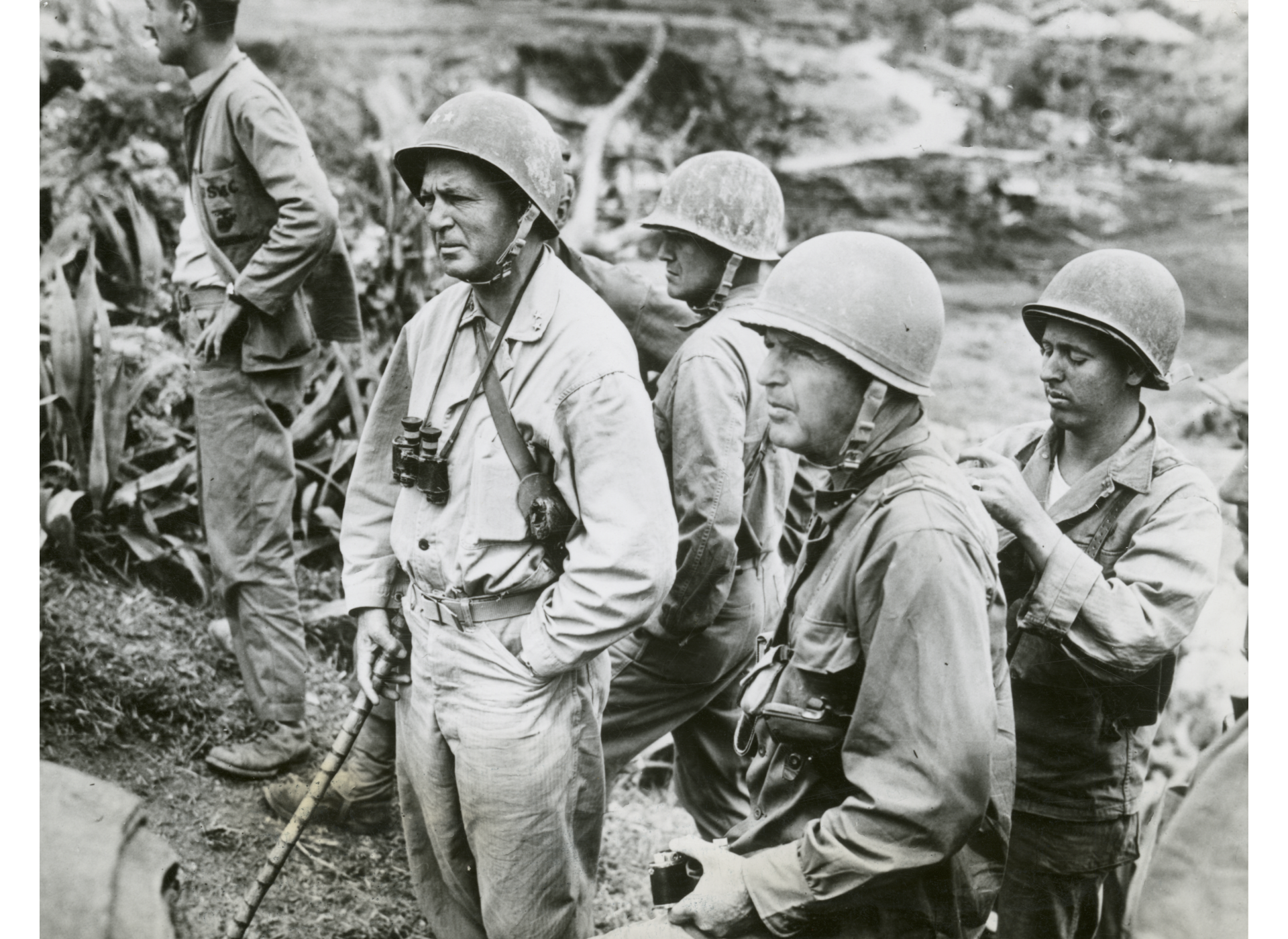
One of the last photographs taken of Lieutenant General Simon Bolivar Buckner (foreground, holding camera), he watches an assault from a ridge on Okinawa. US Marine Corps photograph. The National WWII Museum, Gift of Dylan Utley, Accession #2012.019.404
During the fighting, the American Graves Registration Service (AGRS) and infantrymen removed many of the fallen from the battlefield, often under enemy fire. The nature of the bitter fighting and the conditions took a grim toll. Raging battles rarely came to a complete lull, and incessant artillery and mortar fire could bury or destroy the remains. Torrential rains and subtropical heat quickly created their own horrors. “If people everywhere could see what the residue of battle consists of—the bodies of their soldiers, their children, lying torn asunder,” reflected one 77th Infantry Division soldier about what he saw on Ishimmi Ridge after a unit was decimated, “perhaps it would cause a revulsion, a loathing, an abhorrence of such a magnitude that wars would become obsolete—an unthinkable way to settle differences between nations.”
The Army and Marines buried those killed in action in temporary cemeteries on the island organized at division-level. Since the front lines were relatively close by, remains could be processed somewhat quickly, occasionally the same day as death.
Starting in December 1945, the War Department initiated efforts to identify and return the remains of American war dead for honored burial in US cemeteries from battlefields around the globe. Working through 1948, the Army recovered 10,243 sets of remains from six cemeteries on Okinawa. The remains went to Saipan for further processing and final disposition. The next of kin were given an opportunity to decide if their loved ones returned home or permanently rested in an overseas military cemetery.
Not all of the bodies, however, could be identified. Analysts examined unidentified remains, sometimes multiple times, for clues that might reveal their identity, including whatever material evidence or personal effects had been buried with them. Around 200 sets of remains are currently buried as unknown service members in the Philippines at the Manila American Cemetery.
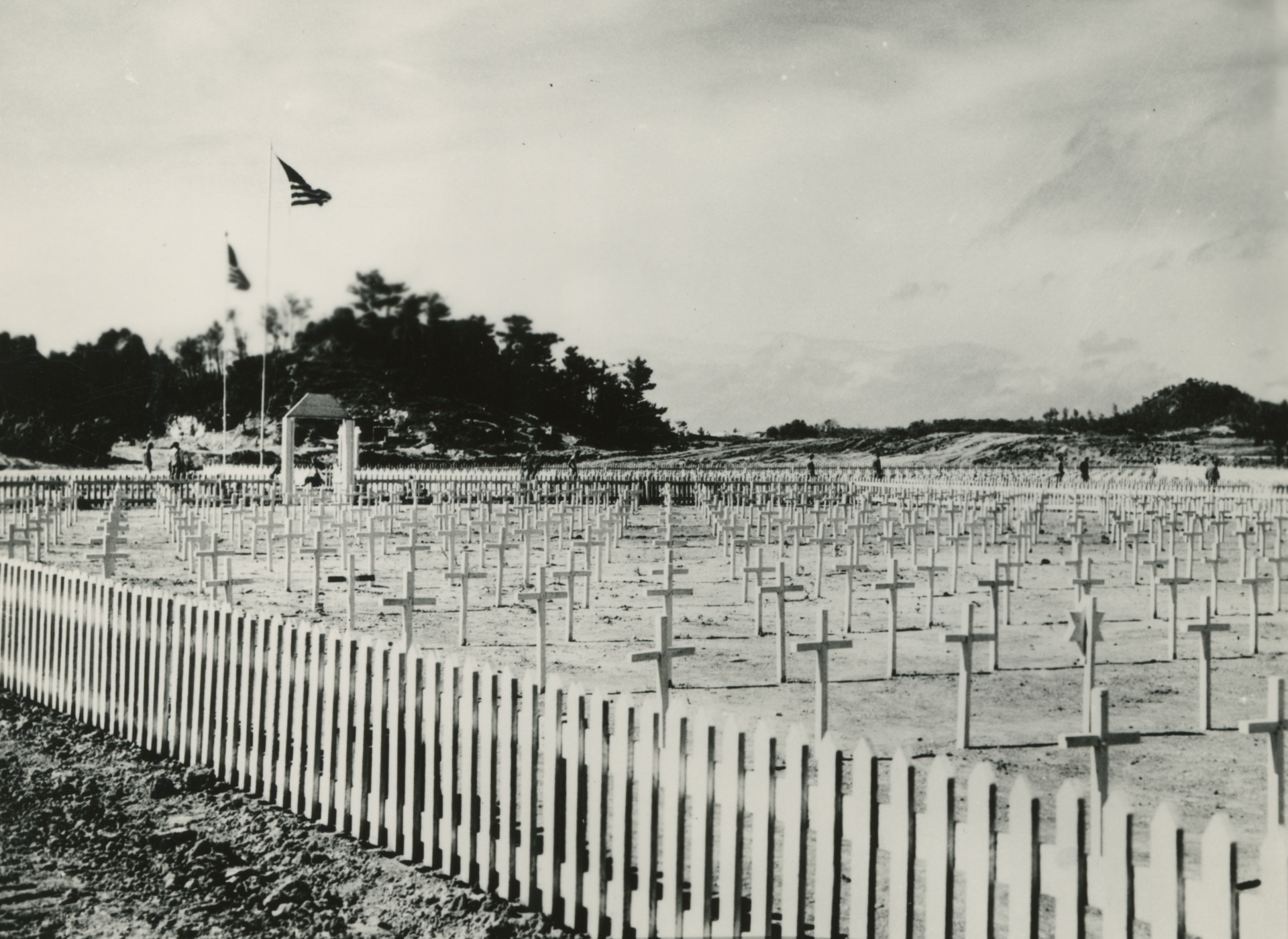
The 96th Division Cemetery on Okinawa two days after the battle ended. US Army official photograph. The National WWII Museum, Gift of Thomas J. Hanlon, Accession #2013.495.1138
Attempts to recover those missing in action also continued after the war. These efforts were part of extensive searches conducted by AGRS to locate nearly 54,000 American military personnel across the Pacific and China-Burma-India Theaters of Operation. Investigation teams found few remains on the Okinawa battlefield after the war, however. Many of the fallen were recovered during the battle, and civilians had already located most of the more accessible remains before the postwar recovery efforts began.
The work still continues today, though. Of the approximately 10,000 sets of remains recovered from Okinawa and the surrounding islands, around 200 Marines and soldiers, more than 600 sailors, and about 450 airmen remain unaccounted for. Historians and analysts from the Defense POW/MIA Accounting Agency (DPAA) continue to track details of losses from Okinawa.
Today, total unaccounted for losses from World War II number more than 72,000. DPAA’s mission is to provide the fullest possible accounting for missing personnel to their families and the nation, to determine the fate of the missing and to recover and identify their remains. Its efforts are global in scope. DPAA considers no case of unrecovered remains ever permanently closed. To that end, the agency continues to cooperate with Japan’s own recovery operations in the Indo-Pacific region.
The tireless efforts to account for the nation’s war dead from so long ago is a uniquely American objective. Ernie Pyle was perhaps correct that “In the joyousness of high spirits it is so easy for us to forget the dead.” DPAA ensures that time also does not erode their memory. It is a moral obligation and a promise that through unwavering commitment and resolve, DPAA will continue to honor the sacrifice of those who lost their lives in service to the nation.
Adam Givens, PhD
Adam Givens is the DPAA Research Partner Fellow at The National WWII Museum and earned his PhD from Ohio University.
Cite this article:
MLA Citation:
APA Citation:
Chicago Style Citation:
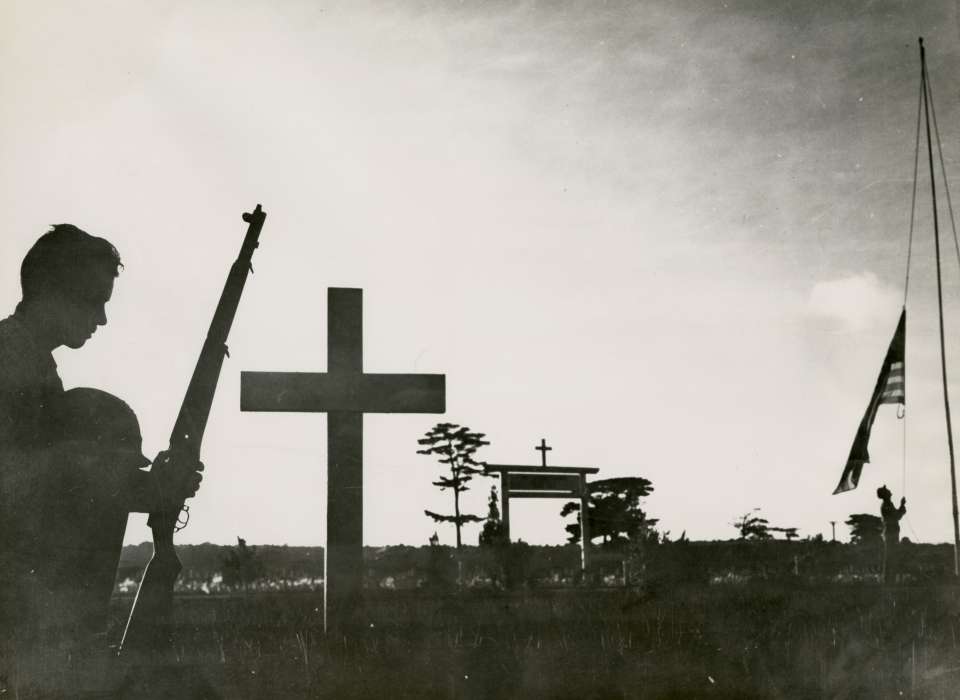
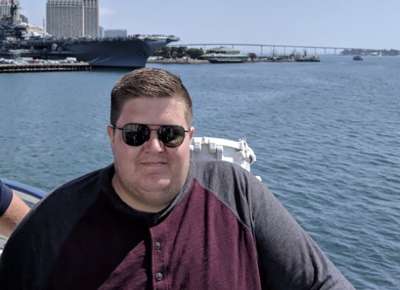
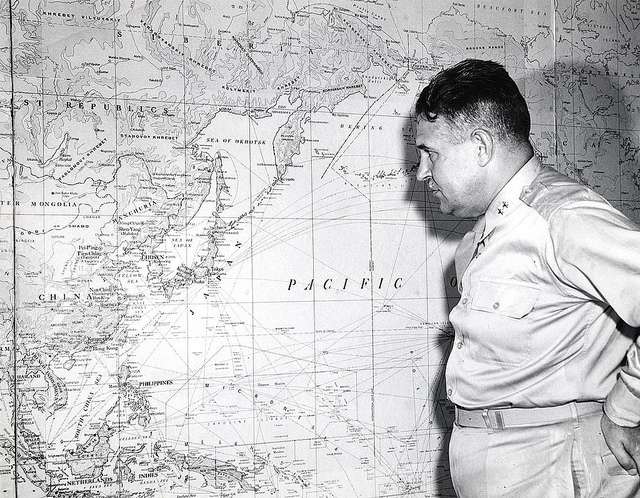
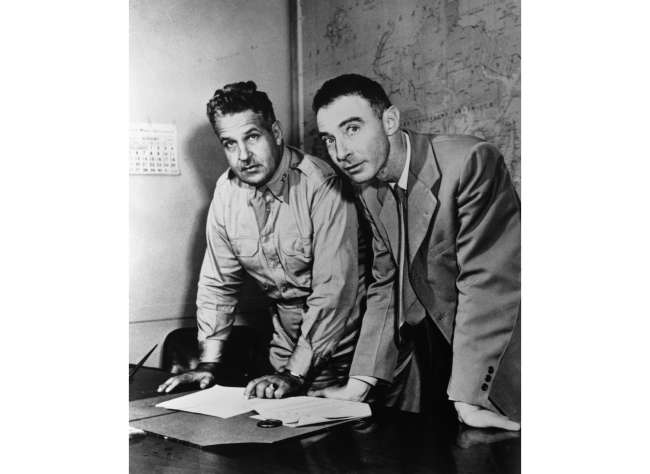





![Max Fuchs, New York City cantor, sings as Rabbi Sydney [sic] Lefkowitz, Richmond, VA, conducts the first Jewish services from Germany.](/sites/default/files/styles/max_650x650/public/2025-10/image1.jpg)

